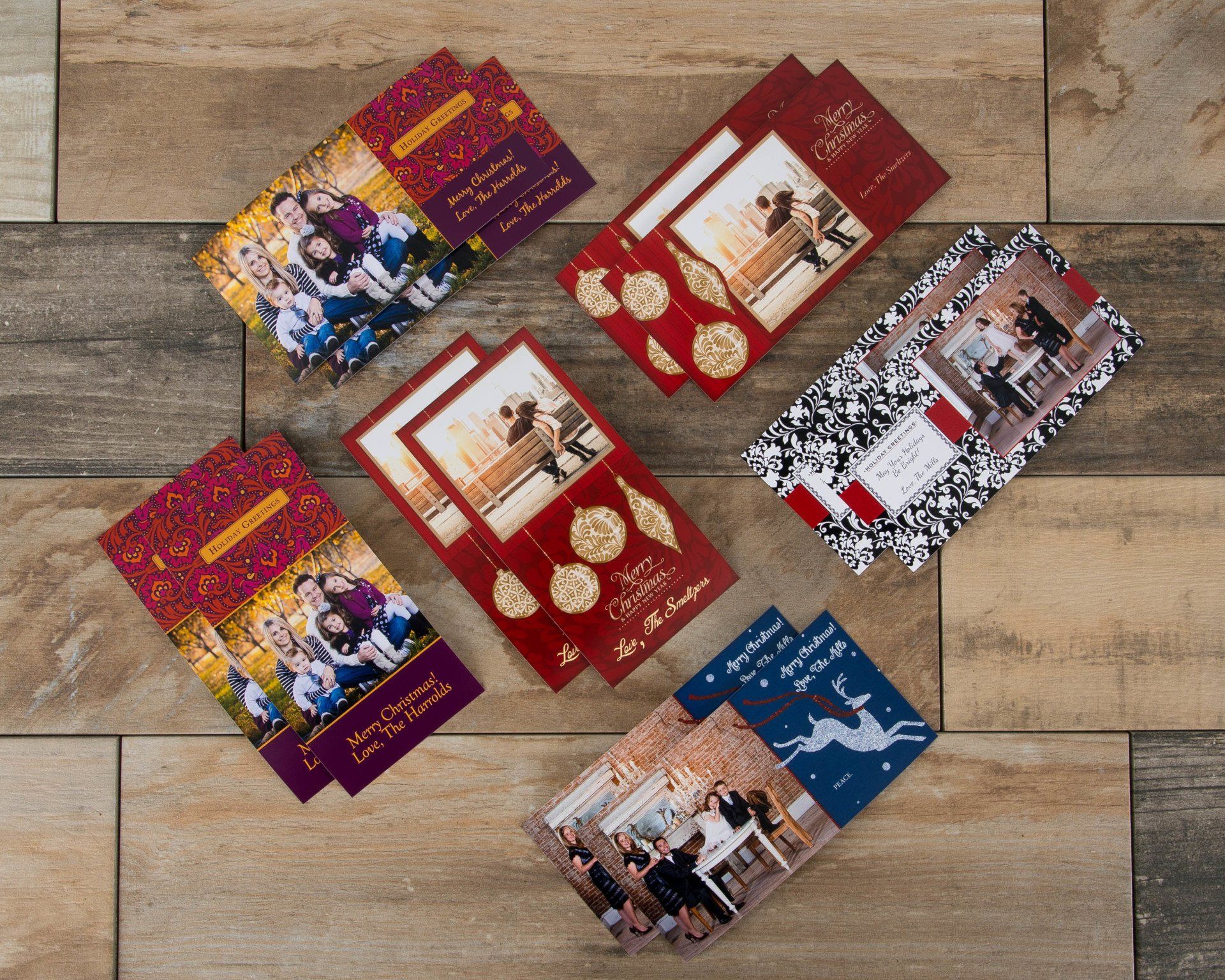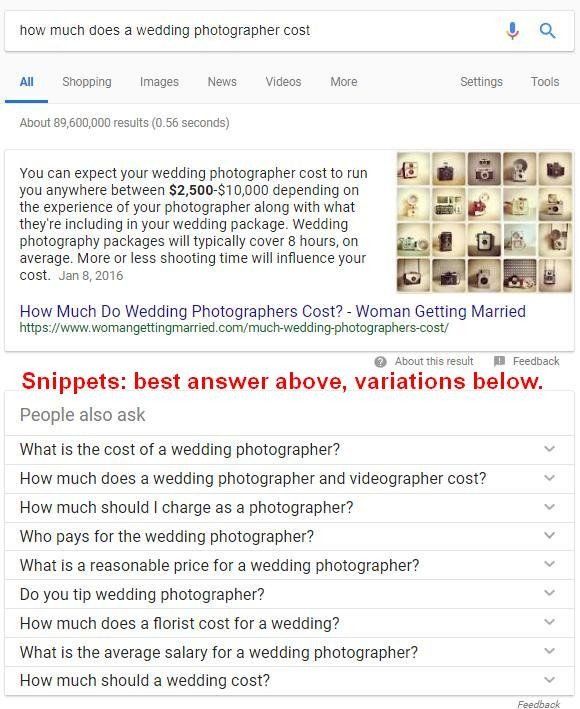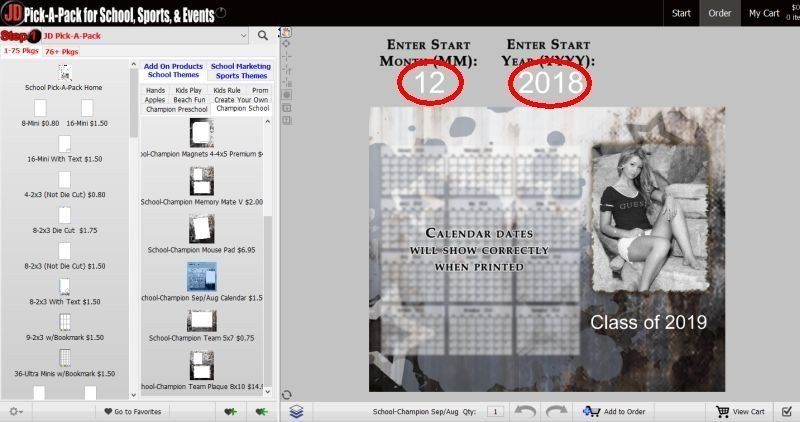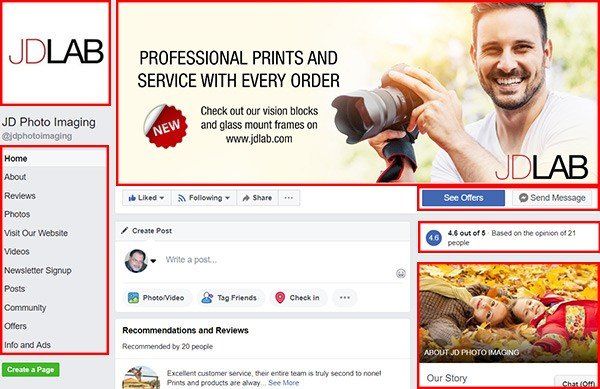By JD Lab
•
October 30, 2018
Online marketing experts report that today, 20% of searches use voice. By 2020, 50% of all searches will be voice searches, and 30% of all searches will not use a screen. The rise of smart home speakers like the Amazon Echo, Google Home and Apple HomePod makes it more difficult for professional photographers to rank organically for their desired search terms. But with a bit of planning, you can be ready for it. Historically, searches were typed into Google on a keyboard and a ranked list of a results were displayed. With the advent of smart phones, searches began as a natural language question, but the results were still displayed as ranked lists on a page. With the advent of smart home speakers the rules have changed. Try this experiment. Type into Google on a desktop PC: best portrait photographer Now ask (not type) the same question on your smart phone, your Amazon Alexa, Echo, Google Home or Apple HomePod. Chances are when you spoke, you asked a normal question like (ok Google / hey Alexa) “Who’s the best portrait photographer near me?” That’s the way people talk to their smart devices. Here’s the challenge: you may not get the same answer. Smart devices assume you’re shopping for a local photographer. Google Home, Android phones and Apple iOS devices by default use the Google search engine, while Microsoft’s Cortana and Amazon’s Alexa use Microsoft Bing. If you’re using Amazon’s Alexa, it may not return any answer, since it is focused on sending shoppers to Amazon. The bottom line is that voice search has made being found by clients more complicated. In the near future, it won’t be enough to rank on Google desktop searches alone. So here are four steps you can take that will get your studio’s website ready to rank for voice searches in 2019 and beyond. 1. Sign up for Google My Business The first step is to sign up for Google My Business and start collecting Google reviews if you haven’t already done so. GMB proves to Google you are a trusted business, and Google reviews lots of 4-5 star reviews tells it you are worth paying attention to. The big difference is that on mobile devices, websites that are both top rated in GMB and “mobile friendly” will rank higher. Mobile friendly refers to your website being fast AND being optimized for mobile screens. While signing up for GMB won’t guarantee you’ll be listed on the first page of Google, if you don’t, it’s almost guaranteed that you won’t be listed. 2. Sign up for Bing Places The next step is to sign up for Bing Places . Bing searches account for about 33% of all searches online. Next sign up for Yelp. Bing relies on Yelp for local reviews. While I don’t recommend paying for Yelp ads, you should list your studio and ask clients for Yelp reviews. Like Google reviews, a number of positive Yelp reviews will tell Bing you are worth a front page local listing. 3. Create a List of Conversational Questions You need to create content on your website that answers questions clients really ask. In SEO-speak, these are called “conversational keyword queries.” For example, if I was looking for a senior photographer for my daughter, I’d type into Google: Senior photography Grand Blanc But if I’m talking to my Google home I’d say: Who’s a good senior photographer near me? Your keyword strategy should begin to focus not on short 3-4 word phrases, but on natural sounding questions: “How much does senior portrait photography cost?” “How much does a wedding photographer cost?” “How long out should I book a wedding photographer? “Where are you located?” “What are your business hours?” Certain keywords will be used much more often via voice search than traditional. Use keywords built around the following: “when,” “how,” “what,” “who,” etc. If you can’t think of questions, start writing down the questions your clients ask you over the phone. 4. Build an FAQ Page on Your Website Once you have a list of conversational questions, create a “frequently asked questions” page named yourwebsite.com/frequently-asked-questions. Copy each of the questions on this page, then provide a single sentence answer to the question, followed by 2-3 more sentences that expand on the first sentence. For example: How long out should I book a wedding photographer? Most wedding photographers and videographers suggest you book out at least 12 months to guarantee your date. While you may be able to get a photographer on short notice, the most popular dates in summer and fall tend to be booked first. Notice how the first sentence answers the question succinctly, while the second sentence provide greater detail that Google or Bing would say. On average, these should be 29 words. Keep words simple (9th grade reading level or less) and don’t use jargon so Google can pronounce them. If you have additional information, include it in a 2nd or third paragraph. What you’ve created is called a “snippet” of information. Snippets of information are not only used to voice answer questions, but to answer them on smart phones or desktops. Here’s a real world example of snippets on a desktop:

















